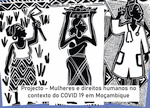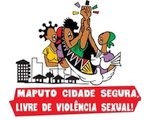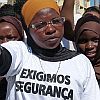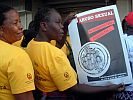Child Rape: Perceptions of Child Rape and Denunciation Contexts
Conceição Osório
Read the first part of this article
In this article we shall try to analyse perceptions of child rape, the profile of victims and perpetrators, and the denunciation context[1]. It is important to understand whether the various entities that intervene in resolving these cases consider children to be rights holders i.e. whether the “solution” focuses on the victim and defending the victim or if it shifts to the family, ignoring the victim’s rights and giving precedence to parental custody. This issue of power is all the more important if one recognises that rape, especially of girls but sometimes of boys, must be understood in the context of a gender structure and cultural norms that exercises domination by controlling the body.
Denunciation versus a pact of silence
According to the people interviewed, the number of child rape cases is rising and they are more visible because families are (dismissing their children’s education) their children, the appearance of practices based on the belief that raping virgins cures AIDS (resulting in many 2 or 3 year-old victims) and rising poverty leading to promiscuity and strategies that use girls as a source of income. We feel, however, that the explanation of poverty as a cause of rape merely reveals the legitimacy of a model that builds power inequality based on sex. Moreover, although rare, some reports persistently show that in some communities (irrespective of their economic conditions) there is growing awareness of the need to denounce rape, especially (and almost only) when the perpetrator is not a relative. Nevertheless, the most common situations described by people are those where rapists can impede denunciation because of their power. There are cases where families have been marginalised by the community because they tried to get legal support. There are also many reports of rapists being freed or even not being arrested by police officers.
On the whole, and as we have already noted, most informants describe rape as an act involving force and sexual penetration. Although only a small group, some people interviewed during the study feel that “premature marriage is rape and a public crime with the aggravating factor that the Family Law sets 18 as the minimum age for marriage. (Francisca 1). She then said that in addition to premature marriage “when a father needs money he mortgages his daughter to a man until the debt is paid”. She added, “Mainly in the centre of the country, there is the promise of marriage, with a newborn baby being promised to an adult who pays her expenses until her first menstruation and then she is handed over to him”.
For the vast majority of informants, perpetrators are close relatives (fathers and stepfathers), although the information provided by the police does not confirm this. For many community activists two phenomena are the most common: parents/the father using daughters to pay debts and rape by fathers or stepfathers on the advice of traditional healers as a way of becoming rich. In a context where many of the city’s peripheral neighbourhoods are facing major crime waves, rape is particularly widespread. Socialised for sexuality devoid of any social and family discourse, rape gives bodies undesired visibility. This transfer from a domain recognised as private to the public space, makes families feel dishonoured and excluded from their surroundings.
Rape is thus also the violation of an essential component of a cultural model that guides and determines the body’s place as a central element in the configuration of sexual identities. This means that when the silence is broken and norms that discipline and domesticate the body in line with gender relations are broken through a violent and controlling power, rape ends up taking place in a context that is socially recognised as “natural” and “legitimate”.
As rape is inherently the expression of one person’s power over another, its visibility means that it affects firstly the family, who did not “know” how to preserve the norm and secondly, it challenges elements of community cohesion. When families and communities try to keep quiet, they are protecting themselves from the disarray brought about by rape, especially the rape of girls. As aggression that targets the sexual body it more significance than other crimes such as homicide. It is an assault on the patriarchal model as perceived and practiced. In other words, the rape to which girls (and also boys) are ritually and routinely subjected, is part of a socialisation that develops control mechanisms related to the domination.
When rape occurs in the public space and also and principally in the private space, there are two situations: either one keeps quiet or one excludes the family that publicised it. Although this is not linear, rape can be resolved by negotiations involving the child’s body as a market good, or by marriage (where mercantilism is still the structuring feature), as in the case of premature “marriage”. However, for both the community and the families what is at stake is the “excess” contained in rape, committed outside the norm. People condemn rape not because it is wrong but because of the dishonour it brings to the family: the child and the adolescent lose their value as a resource, are disgraced and exposed to public censure.
It should also be said that rape by teachers or unknown people is on the rise. In the latter case, rape usually happens when children are returning home late from school or are selling items in the street, and often culminates in their murder.
The issue of sexual intercourse with virgins curing HIV/AIDS has become an important factor in the rise in rape cases or at least the media coverage. The situation is aggravated by the fact that, although there is an Institute for Traditional Medicine and a programme within the Ministry of Health (MoH) “traditional medicine practitioners continue to say that if those infected have intercourse with a virgin they will be cured” (Isabel 1). Along the same lines, a health worker reinforced the notion that “traditional healers are not very concerned about girls’ health problems, from physical to psychological trauma, so rape is being treated together with strategies to fight STI”[2] (Isabel 2).
Lack of sensitivity is combined with ignorance of the law by instances such as community courts that are responsible for defending citizens’ rights within communities. We were, however, told of a situation where people waiting to be assisted in a health centre were complaining loudly about a mother who refused to report the rape of her daughter. This is an indication of sensitivity that needs to be encouraged by institutions and CSOs. There is also a need for community information activities within health units, possibly with more success, as they are outside the community environment (where everyone knows each other and have neighbourly and other kinds of relations). This might be achieved by creating an environment more protected by anonymity to encourage denunciation. This is all the more important when one understands that the reason why secrecy surrounds rape is to protect the family’s image. As mothers accompany their children to health units, and as they are also often victims of violence, we feel it would be interesting to promote an integrated approach to gender violence based on health centres. We need to understand a mother’s ambiguous position when faced with denouncing a partner in a context of gender subordination that, by developing mechanisms that legitimise male domination, becomes an instrument of this very same power by exonerating and protecting the perpetrator and co-opting the victim into submission and silence.
Although little mentioned, cases of rape against six and seven-year-old boys are also appearing. These cases are also committed by relatives or older boys when watching pornographic films. Earlier studies (Osório e Silva, 2008) have looked at pornography as a means of configuring sexual identities. In other words, the exercise of one person’s power over another that is made brutally explicit in these films, continues and reaffirms the socialisation for domination learned elsewhere. From a gender perspective, these children are subject to double violence: the rape itself and the stigma that comes from the submissive victim breaking the model of masculinity. It is interesting to note that the social response to these crimes, rarely made public, is much more critical than in the case of rape of girls, implying a certain fatalistic attitude that female rape is more natural.
The profile of victims and perpetrators
Most of the children raped are between 9 and 12 years old, can come from any social group, from doctors to journalists, and the continuation of psychological treatment is more related to the family’s feelings than social class. Nevertheless, according to a psychologist a child’s therapy often ends after the Forensic Medicine report has been received:
“They stop because their families feel that the case has been resolved when Forensic Medicine sends it to the police, or because going to hospital or the health centre means that parents have to take time off work and face impossible travel expenses.” (Joana 2).
In addition, there are cases where families do not know where to get help, and are sometimes misled by the police, as recounted by a psychologist:
“I had a case where an uncle raped his niece and the police said they should go home and resolve the matter there. The girl came to the first session but then never came back. Sometimes families blame the girls, saying they are guilty because they seduced the rapist, because they wore a short skirt” (Joana 6).
As regards the profile of rapists, as already stated and according to informants, most are relatives of the victims. A smaller number are unknown (as already stated, acting when children are returning from school or working as hawkers in the street). Various people said that there are more rape cases during school holidays, when children are alone at home or go to the homes of relatives.
There is widespread agreement that the rapist is usually someone close to the victim – uncle, father, stepfather, grandfather, teacher, neighbour – with an age range of 20 to 45 years. There are, however, cases of much older people raping children. In some cases, mothers see children as their rivals, and portray them as seducers. Even when rape occurs outside the family, they prefer to negotiate with the perpetrator and drop their complaint. This is a particularly serious situation because in cases of rape of a child under 12 years of age the charge cannot be dropped.
As regards trauma, the psychologists interviewed said that in the case of the smallest children there is standard behaviour due to fear and physical pain, whereas adolescents are able to describe their experience and convey their feelings. Some children return several years later with behavioural changes that they blame on what happened, expressing profound dissatisfaction with themselves, a sign of low self-esteem. Because they learned about sexuality at home through silence and taboos, children hide the aggression from their families because they are afraid and ashamed, even when it was done by someone they do not know.
The following report by a psychologist shows clearly the traumatic consequences of rape:
“The children we receive are traumatised, afraid, distressed; they isolate themselves, cry for no reason, have nightmares, dream about the rapist, are afraid of being left alone. When their parents go out they are frightened by any sound, they always want to be with their mothers, have difficulty sleeping because in their dreams they relive what happened to them. Merely sensing the rapist’s smell as if he were there, a girl feels ill, and is afraid of men. They become afraid of sex, think that sex means violence; some do not even want to marry. If they do marry, they feel no pleasure. Some end up on “Avenida 24 de Julho”[3]. As she has been raped she has no self-esteem, as if she herself were to blame. She was raped by her father, uncle, cousin and had no support from anyone; she took that into her adult life”.
The respondent then added:
“I had one case of a woman who still wet the bed, even when she was an adult with children. We discovered that she had been raped as a child. Particularly when the rapist is a member of the family know one talks about it; it happened and now it’s over; the child is told to keep quiet and no one pays any attention to the trauma” (Joana 8).
Perceptions of rape and the implications of denunciation
When respondents analysed rape there was usually considerable ambiguity. On the one hand, their discourse condemned families who do not report it but on the other hand, there was some sympathy for the attitude of families who do not, used as an argument for not pursuing the case. When it is stated that “when fathers are rapists, mothers do not want to report it because they will end up without food” (Maria 5), what appears to be mainly a statement of fact also contains an expression of sympathy for those who cover it up.
Along the same lines another respondent said, “Many cases of rape are not reported to the police; the victim does not make a complaint out of fear; families hide cases because they are ashamed. Many mothers are afraid to inform fathers and the latter say nothing or also try to negotiate with the perpetrator” (Francisca 1). The same interview gave an example of how mortgaging a child is considered a fair a strategy by the community, with cases where a judge’s decision to order the arrest of the father or the traditional healer was not understood by the population.
Simultaneously, as happens in other human rights fields, there is an attempt or the temptation to articulate sexual violence with modernity, valuing tradition, the practices and values that structure it as shown by this example:
“Tradition has always condemned child rape. In rural areas, when a child is raped the family gives her purification baths. They believe that as the rapist ejaculated on the child’s legs, with sperm running down her legs, this is a sign that in future she will have miscarriages and for this reason must be purified through baths” (Francisca 2).
This is a good illustration of how culture can constrain rights, disqualifying and considering the aggression and its “cure” as a solution to the problem. What is at stake here is not so much the suffering child but guaranteeing her future reproductive function. This position fits the perception that the guilt is shared by the perpetrator and the victim, and that the latter seduced the perpetrator. The situation is even more evident in cases where rape is committed within the family and must be “protected”. This is one reason why only some of the respondents thought that it would be grounds for removing the perpetrator, especially if he is the family’s breadwinner. The most common opinion is that the child should remain in the family space (living with the perpetrator), or be moved to a Centre. What this means in reality is a double punishment for the victim: first raped and then isolated and neglected by those who have the obligation to love and protect her.
It was interesting to find that for some respondents, one way to fight rape is to identify the single men in the neighbourhood because they are more likely to rape. This not only means maintaining the hegemony of heterosexuality as the normative model, but transmits a notion that men are naturally predisposed to rape and this is resolved by the existence of a union. In fact, however, this does not fit the study’s findings that in most cases rapists do not have specific characteristics. Most perpetrators are to be found within the family and among neighbours.
Finally, if we want to compare the various sensitivities, there are differences among agents working in different sectors or in the same sector, such as doctors, nurses and psychologists. The first two groups have a more medical approach, concerned mainly with lesions and less with trauma. We did, however, find many nurses who had been specifically trained to identify cases of domestic violence and are now more attentive and interventionist on rape. These points to the need for a multidisciplinary approach to training curricula[4].
As regards the perceptions of police officers, there is no agreement about rape and its legal framework. There are different levels of knowledge and sensitivity when handling child rape cases. On the one hand, the chain of command in police stations and the position of police officers (working in the Assistant Offices) in the police hierarchy can produce greater celerity in channelling rape cases, while on the other hand some are not immune to family pressure (or pressure from elsewhere) to halt denunciation and conceal the crime.
Conclusions
There has to be a gender approach in the analysis of rape committed against children of both sexes. Analysing rape from a gender social relations perspective, with power a crosscutting feature, one understands how rape becomes something natural, especially when committed in the family context, permitting a break with a fatalist and banal view of the evil.
Addressing the question in this way points us to a child’s human rights perspective, based on the fundamental principle that the child is a rights holder and as such must be protected. The research showed quite clearly that if rape is a sensitive problem for everyone, it is often tolerated (and “undeclared”) and means, for example, that denunciation is left to the families even when legally it is a crime.
Child rape is thus a brutal manifestation of how a social construction of gender identities is structured by a model of masculinity and femininity that makes sexual bodies conform to social control, that’s punishes/blames/exonerates depending on what is culturally recognised as acceptable or not.
Reference:
Osório, C.; Silva, T. (2008), Buscando sentidos, Género e sexualidade entre jovens estudantes do ensino secundário, Moçambique. Maputo: WLSA Moçambique.
[1] Pseudonyms are used for informants.
[2] Sexually transmitted infections.
[3] A road with heavy traffic and at night “populated” by girls, adolescents and young girls engaged in prostitution
[4] In 2009, 2010 and 2011 MoH and WLSA conducted activities and training for Mother and Child Health (MCH) nurses in Maputo city and province.







 Information in English
Information in English



















